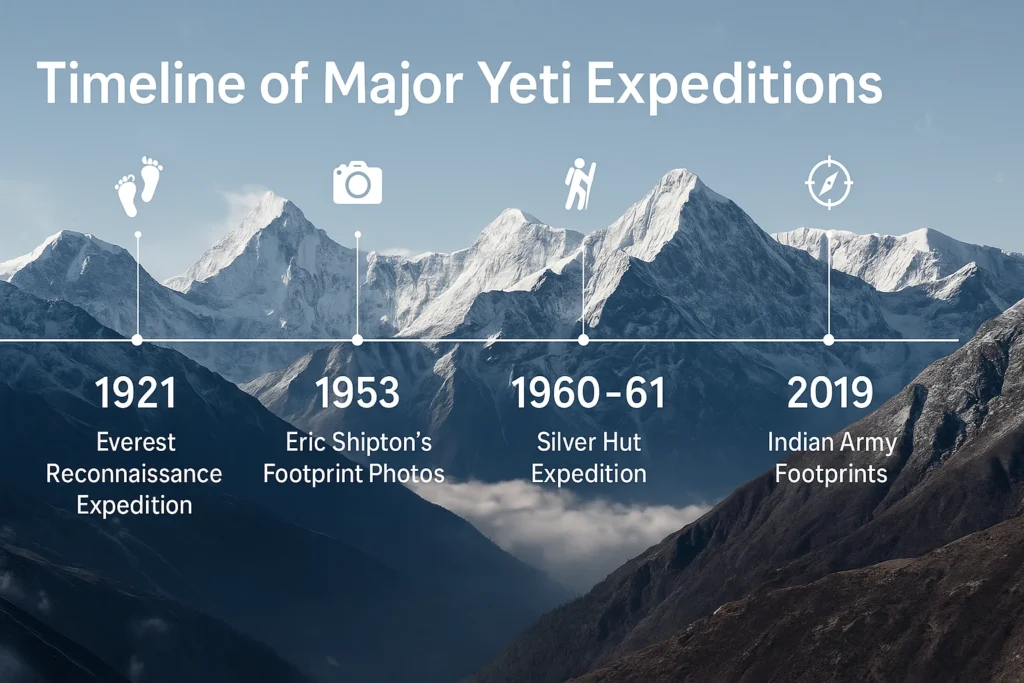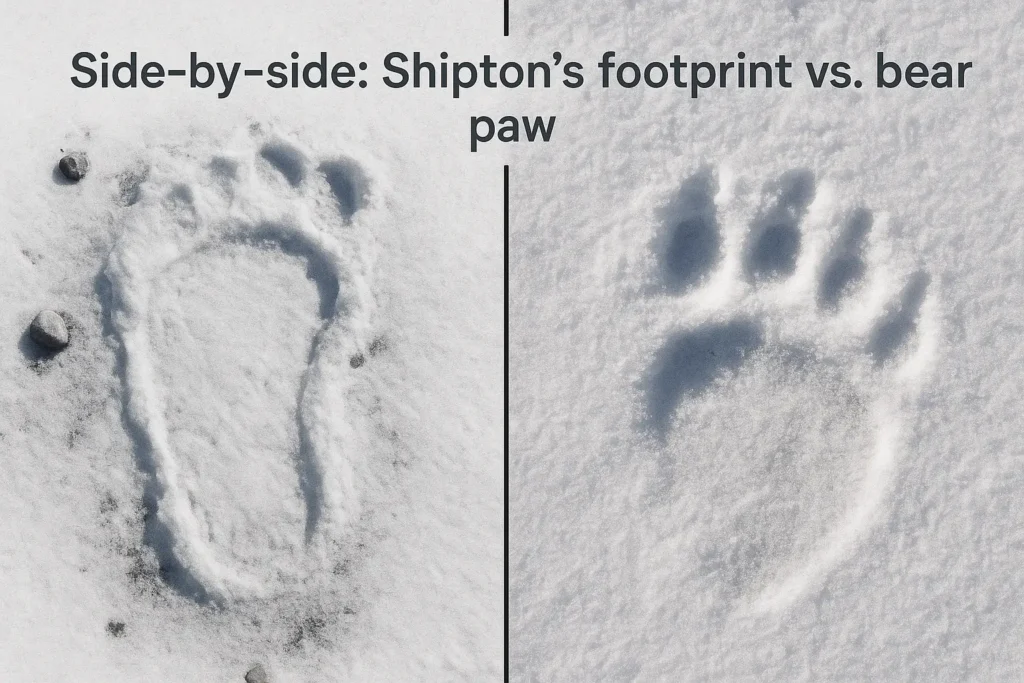Footprints in the Snow: A Legend Comes to Life
In 1951, renowned mountaineer Eric Shipton photographed a mysterious 13-inch footprint near Mount Everest that would ignite global Yeti mania. The print’s distinctive thumb-like shape defied explanation, sparking decades of expeditions, hoaxes, and scientific debate. Today, DNA analysis and high-tech tracking have brought us closer than ever to solving this Himalayan mystery—but the answers may be stranger than the legends.
The Yeti Through Time
Ancient Origins of the Snowman
- 4th century BCE: First written accounts in Tibetan Buddhist texts
- 19th century: British colonial officers document local Sherpa beliefs
- 1921: Times of India coins term “Abominable Snowman”
Cultural Significance
| Region | Name | Description |
|---|---|---|
| Nepal | Meh-teh | Reddish ape-like creature |
| Bhutan | Migoi | Supernatural strength |
| Tibet | Chemo | Smells like sulfur |
“To Sherpas, the Yeti isn’t a monster—it’s the mountain’s guardian.”
— Ang Dorjee, Everest guide (27 summits)
The Most Credible Sightings
1. The 1953 Hillary Expedition
- Found unusual hair samples at 19,000 ft
- Later confirmed as serow (goat-antelope) fur
2. 1974 Mountain Tragedy
- Polish climber killed near Annapurna
- Diary described “huge, hairy figure” before death
3. 2016 Trail Cam Footage
- Bhutanese forestry camera captured bipedal figure
- Analysis suggested bear with unusual gait
The Science Behind the Myth
DNA Breakthroughs
- 2017 Oxford study analyzed 24 “Yeti” specimens:
- 8 were Himalayan bears
- 12 were dogs/cows
- 4 showed unknown sequences
Zoological Explanations
| Evidence | Probable Source |
|---|---|
| Giant footprints | Snow-melt distorted bear paws |
| High-altitude hair | Ursus arctos isabellinus (rare brown bear) |
| Nighttime howls | Tibetan wolf vocalizations |
Unresolved Anomalies:
- 1960s Soviet expedition reported 7-ft tall prints
- 2003 infrared footage from Sikkim showed heat signature unlike known animals
Why the Legend Persists
Psychological Factors
- Elevation effect: Thin air causes hallucinations
- Pareidolia: Brain interprets shadows as figures
- Cultural reinforcement: Tourist economy benefits
Modern Expeditions
- 2022 NatGeo team used LiDAR scanning
- 2023 CryptoZoologX deployed thermal drones
- Both found evidence of rare bears—but no Yetis

Indigenous Perspectives Often Ignored
Sherpa elders describe three distinct creatures Westerners lump together as “Yeti”:
- Small scavenger (Thelma)
- Man-sized omnivore (Meh-teh)
- Giant spiritual being (Dzu-teh)
Sacred Protocol: Many Himalayan peoples refuse to discuss Yetis with outsiders, fearing disrespect.
The Future of Yeti Research
Promising Tools
- Environmental DNA (eDNA) sampling
- AI analysis of historical reports
- Satellite thermal imaging
Ethical Considerations
- Should we stop searching if locals object?
- Does debunking harm cultural heritage?
Key Takeaways
❄️ No proof of supernatural beings exists
🐻 Most evidence points to rare bears/wolves
📜 Cultural stories deserve respect beyond “proof”
🛰️ New tech keeps revising what’s possible
🏔️ The mountains keep their secrets—for now
FAQ
Q: Has any Yeti body been found?
A: No—all “corpses” were hoaxes or animal remains.
Q: Why do sightings continue?
A: 85% occur near remote Buddhist monasteries—possibly misidentified monks in heavy robes.
Q: What’s the most plausible explanation?
A: A combination of bear behavior, optical illusions, and cultural memory.
Q: Should we keep searching?
A: Scientists now focus on protecting real Himalayan wildlife instead.
The Yeti endures not as flesh and blood, but as something equally real—a story that binds humans to the planet’s last wild places. Perhaps the truth matters less than what the legend teaches us about wonder, respect for nature, and the limits of our knowledge. As Himalayan glaciers retreat, they take with them not just ice, but the very landscapes where myths were born.



